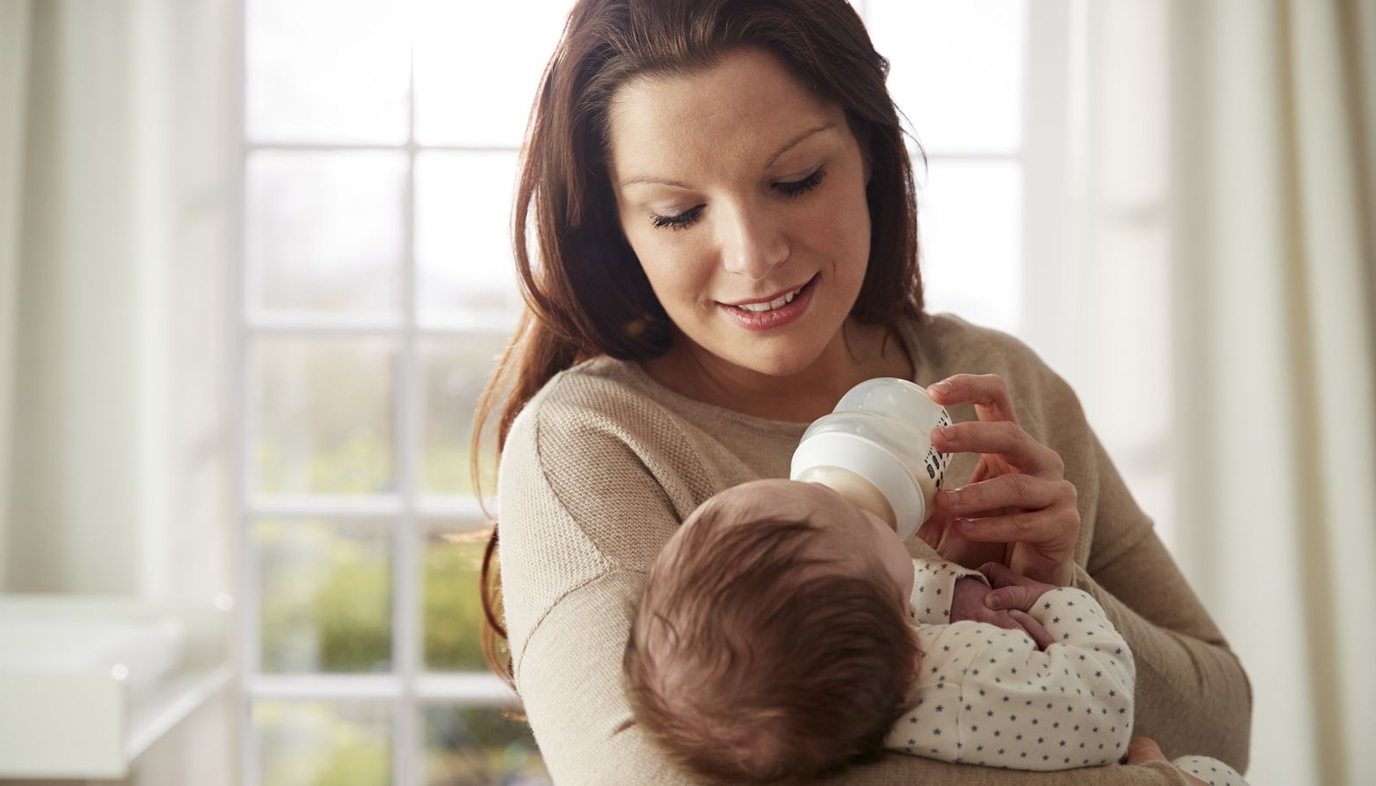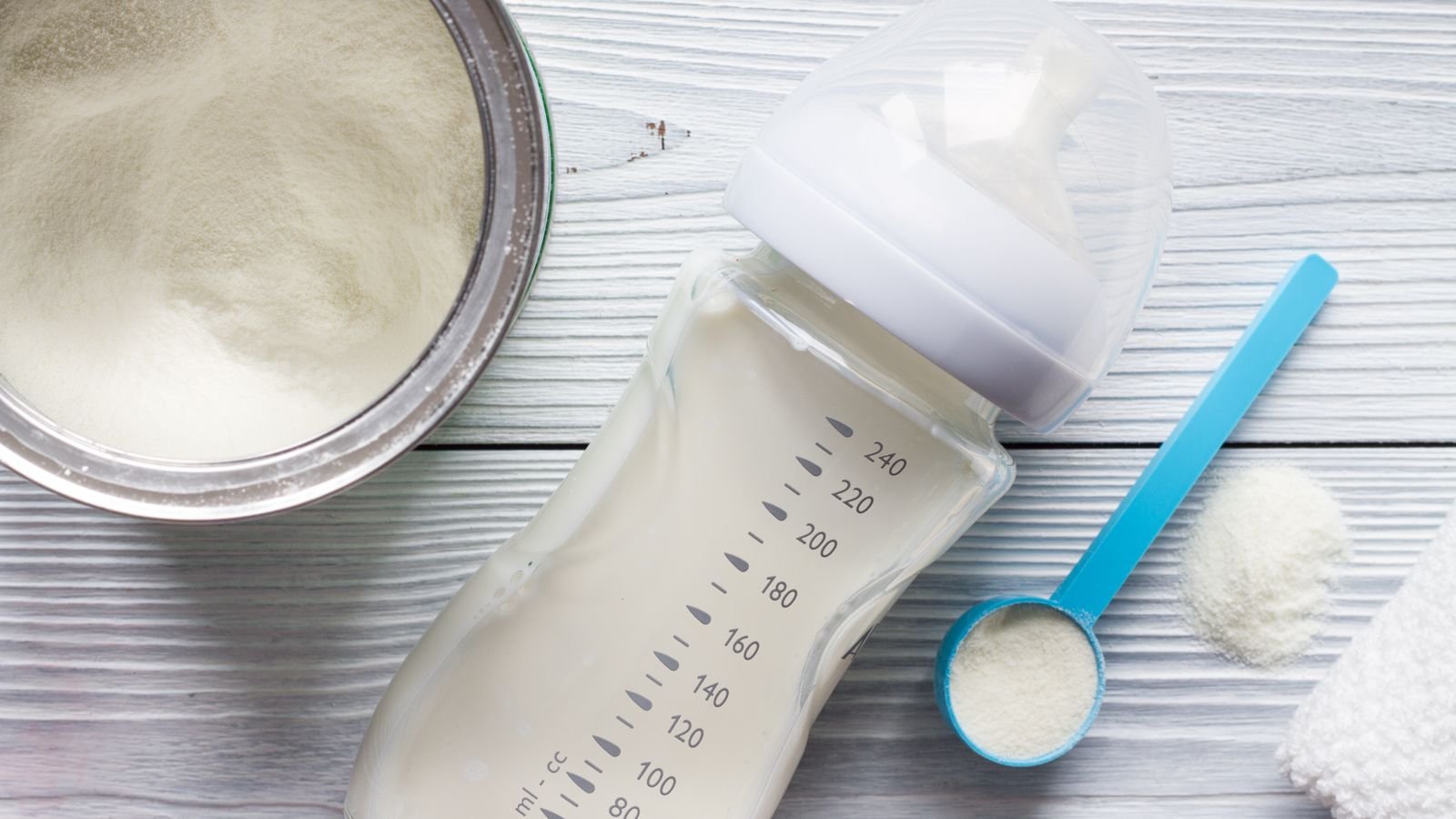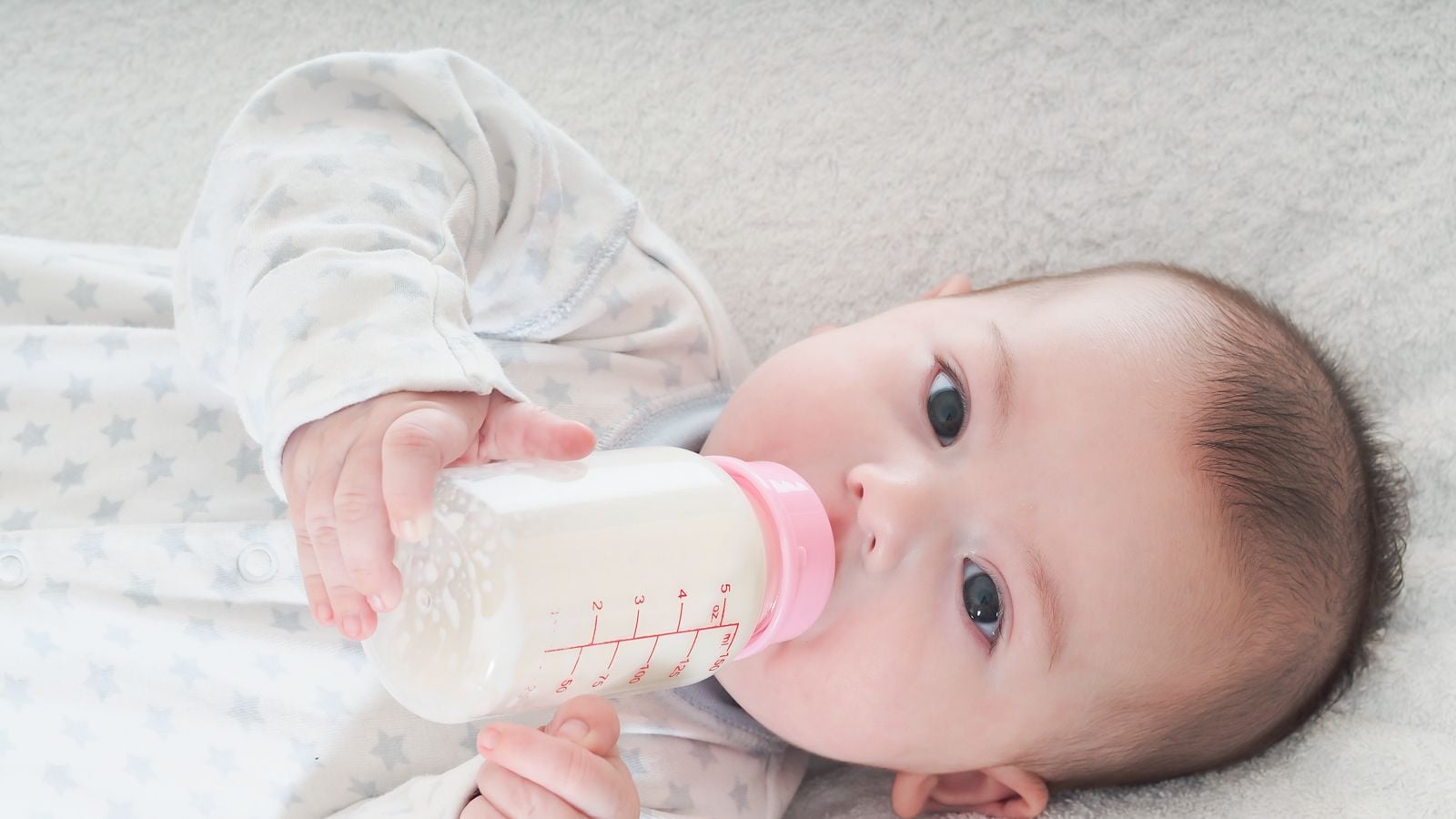
By Maria T. Pepin
One of the first decisions you will make for your newborn baby is whether to breastfeed or formula feed. Experts agree that breast milk is the ideal form of nutrition for the first six months of life. However, it is every couple’s choice to decide what is best for them. Sometimes a mother cannot or prefers not to breastfeed. Rest assured, commercially prepared formulas are designed to provide the nutrients your baby needs. Here are the answers to some of the most common questions about formula feeding.
What Type of Formula Should I Use?
There are many choices when it comes to picking a formula these days. Which brand you go with depends on your preference, your baby, and your budget. Infant formula comes in three basic forms: ready-made, concentrate, or powdered.
- Ready-made liquids can be poured directly into bottles. These are the most convenient because there is no mixing or measuring required. It’s also a good choice if you are traveling or do not have access to sterile water.
- Concentrates are liquids that require diluting with water, so you need to read the directions carefully. Compared to ready-made formulas, these are less expensive and take up less storage space.
- Powdered formulas require mixing with water and are the least expensive. You can mix up just the right amount whenever you need it- as much or as little as necessary- which is helpful for breastfeeding moms who may only require an occasional supplemental bottle.

Common formulas on the market include cow’s milk-based formula (which is the most popular), soy-based formulas (for babies who are lactose intolerant or allergic to cow’s milk) or specialized formulas for premature and low-birth-weight babies. Remember to always check the expiration date and never use formula from leaky or damaged containers.
How Often Should I Bottle Feed My Baby?
Your little one will let you know when they are hungry and will stop eating when they’ve had enough. Offer a bottle every 2-3 hours at first. Your baby will probably take 1 to 3 ounces per feeding, until they reach about 10 pounds. Don’t force more than your baby seems ready to eat. As your baby grows, feeding will usually become less frequent and more regular. Ask your doctor if you have any questions regarding suitable amounts for your child as they grow.
Can I Mix Breast Milk and Formula?
Some moms find that combination feeding is a good way of giving their baby the benefits of breast milk, along with the convenience of formula feeding. Make sure you have a breastfeeding routine well established before you introduce this scenario. Feed your baby whatever breast milk you’ve expressed first and then follow that up with a couple ounces of formula if you need it. However, combination feeding is not an option if your baby is being bottle fed only. It’s extremely difficult to restart breastfeeding once you have completely moved on to a bottle.

How Do I Sterilize My Baby’s Bottles?
Sterilizing is the most effective way of protecting your infant from harmful germs and bacteria. Before you use new equipment (bottles, nipples, rings, etc.) you should sterilize them by submerging everything in a pot of boiling water for at least five minutes. Allow them to dry on a clean towel. Please note: it is recommended that you sterilize all feeding equipment until your baby is at least 6 months old. You can give your equipment a good cleaning in hot, soapy water or cycle them through the dishwasher as well.
What Is the Best Way to Warm a Bottle?
Some babies don’t mind cold milk as long as it isn’t straight from the refrigerator. However, if you do decide to warm up your baby’s bottles, one of the most common methods is to use a pan of hot (not boiling) water, or you can simple run it under the tap. You can also consider buying a bottle warmer designed for this purpose. Do not use a microwave to heat a bottle of formula. Microwaves heat unevenly and this can create hot pockets, which leads to burns.
How Do I Bottle-Feed My Baby Comfortably?
Sit in a chair that supports your back, with a table nearby. This way you can place the bottle, tissues, baby wipes and a glass of water for yourself within arm’s reach. Before feeding your baby, check to make sure the milk is at the right temperature by shaking a few drops on the inside of your wrist. It should be lukewarm. If it’s too hot, run the bottle under cold water. When feeding your baby, listen and observe your baby’s cues. Hold your baby at a 45-degree angle. Make sure to tilt the bottle so that the nipple and neck are filled with formula. Otherwise, your baby may get a mixture of air. Never prop a bottle; it can cause your baby to choke. If your baby is struggling to get enough milk, you can always change to a nipple with a larger hole, so the milk will flow quicker.
